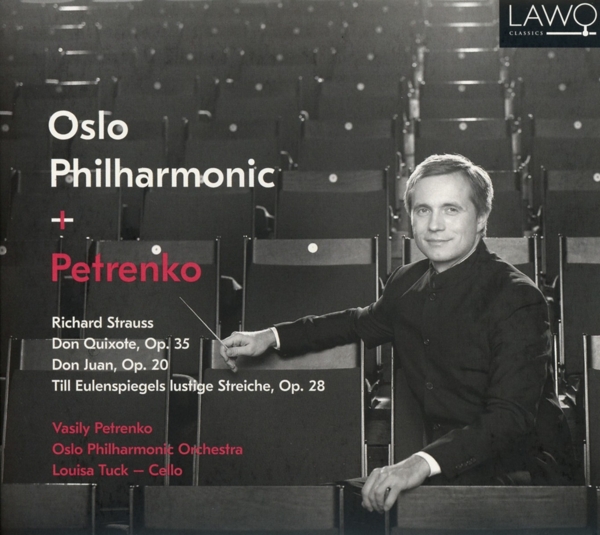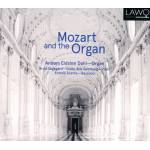| Bemerkungen / Titelliste: |
Don Quixote op. 35 (Fantastische Variationen über ein Thema ritterlichen Charakters) 01. "1. Introduktion" 01. "1. Introduktion" 02. "2. Thema" 02. "2. Thema" 03. "3. Maggiore" 03. "3. Maggiore" 04. "4. Variation 1: Das Abenteuer mit den Windmühlen" 04. "4. Variation 1: Das Abenteuer mit den Windmühlen" 05. "5. Variation 2: Der Kampf gegen die Hammelherde" 05. "5. Variation 2: Der Kampf gegen die Hammelherde" 06. "6. Variation 3: Gespr?che zwischen Ritter und Knappe" 06. "6. Variation 3: Gespr?che zwischen Ritter und Knappe" 07. "7. Variation 4: Das Abenteuer mit der Prozession von Büßern" 07. "7. Variation 4: Das Abenteuer mit der Prozession von Büßern" 08. "8. Variation 5: Don Quixotes Wacht in der Sommernacht" 08. "8. Variation 5: Don Quixotes Wacht in der Sommernacht" 09. "9. Variation 6: Die verzauberte Dulzinea" 09. "9. Variation 6: Die verzauberte Dulzinea" 10. "10. Variation 7: Der Ritt durch die Luft" 10. "10. Variation 7: Der Ritt durch die Luft" 11. "11. Variation 8: Die Fahrt auf dem verzauberten Nachen" 11. "11. Variation 8: Die Fahrt auf dem verzauberten Nachen" 12. "12. Variation 9: Der Kampf gegen die vermeintlichen Zauberer: Der Angriff auf die M?nche" 12. "12. Variation 9: Der Kampf gegen die vermeintlichen Zauberer: Der Angriff auf die M?nche" 13. "13. Variation 10: Zweikampf mit dem Ritter vom blanken Monde: Heimkehr des geschlagenen Don Quixote" 13. "13. Variation 10: Zweikampf mit dem Ritter vom blanken Monde: Heimkehr des geschlagenen Don Quixote" 14. "14. Finale: Don Quixotes Tod" 14. "14. Finale: Don Quixotes Tod" 15. "Don Juan op. 20 (Tondichtung nach Nikolaus Lenau)" 15. "Don Juan op. 20 (Tondichtung nach Nikolaus Lenau)" 16. "Till Eulenspiegels lustige Streiche op. 28 (nach alter Schelmenweise in Rondoform)" 16. "Till Eulenspiegels lustige Streiche op. 28 (nach alter Schelmenweise in Rondoform)"
|
 |
| Anzahl der Tonträger: |
1 |
 |
| Extra-Infos: |
Oslo Philharmonic / Louisa Tuck |
 |
| Beschreibung: | It took many hours of rehearsal for the Weimar Orchestra to get it's lips and fingers around Richard Strauss's tone poem "Don Juan" in the Autumn of1889, even with the benefit of the composer himself in charge. Not much about this music was conventional. Certainly not it's opening page. The piece launches, off the beat, with an elusive upward flourish metamorphosing into a string of motifs that spans more than three octaves. It is the libertine Don Juan leaping out in front of us, and the 25-year-old Strauss introducing himself to the world with the piece that would make his name. Most composers endure a crisis of identity before finding their true voice, but Richard Strauss was forced to do so against the backdrop of a fierce ideological battle. In his twenties, Strauss felt he was stalling: preoccupied by a functionary conducting position at the Munich Court Opera and unsure where his calling as a composer lay following a moderately successful symphony and some promising songs. It was an orchestral violinist, Alexander Ritter, who urged Strauss to explore the genre defying 'tone poems' of Franz Liszt, in which wordless orchestral music was used to recount a story. The score of "Don Juan" covers a great deal in it's relatively short span. But Strauss was determined to demonstrate that a large-scale tone poem was capable of pushing orchestral music to it's expressive limits. If there was a faint suggestion in Don Juan's score that the character's quest for women is also quest for meaning in life, another Don would provide Strauss with the opportunity to explore that idea from multiple angles and with irony thrown in. In 1897, the composer was drawn to Cervantes' 1605 novel "Don Quixote", which tells of a chivalrous but deluded knight errant setting out to put the world to rights - even inventing a woman, whose hand he will win, to make the enterprise worthwhile., Runningtime: 00:00:00, Labelcode LAWO1184.2 |
 |
| Herstellernummer: |
LWC1184 |
 |
Details zur Produktsicherheit
Verantwortliche Person für die EU:
Lawo
Import durch: Note 1 Music GmbH
Bergheimer Str. 126, 69115 Heidelberg, DE
info@note1-music.com |
 |






















